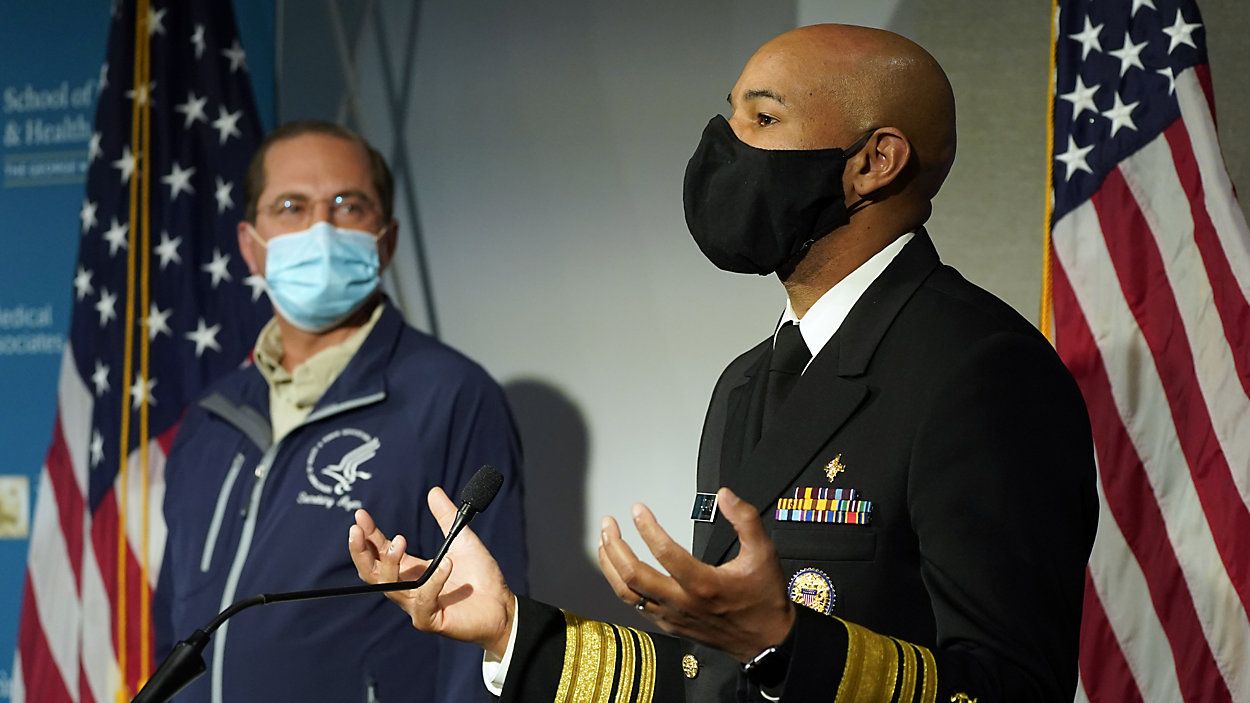OHIO — During a virtual visit with Gov. Mike DeWine Saturday, the U.S. Surgeon General Jerome Adams said vaccine distribution is not delayed and predicted estimates may even improve after Moderna’s vaccine received emergency use authorization Friday.
“Here’s the good news: 20 million doses by the end of December is what we still expect, especially with the Moderna EUA yesterday, 50 million by the end of January total, 100 million doses by the end of February, that is half of the adult US population,” Adams said. “So we’re on track to put this pandemic away.”
Adams met Saturday with the Gov. Mike DeWine of Ohio. The governor Friday lowered Ohio's December vaccine projections from 660,000 doses to 530,000 doses. Ohio says the problem is not on the state’s end. In the meantime, Pfizer and Moderna report no delays.
After their meeting, DeWine and Adams addressed residents of the state on the vaccine effort.
DeWine said the state is still on track to vaccinate nursing home residents and staff in a three to four week timeframe.
“This is not a question of processing here. This is a question of what they're telling us they are going to allocate,” DeWine said.
Adams defended the federal rollout against negative headlines nationally as governors lowered their December projections, in some cases by up to 40%.
“We will be on a timeline to have 20 million doses nationally and that proportional amount that's going to come to Ohio delivered by the end of December, if not more so with this announcement of the Moderna vaccine. So, I think that's the story there is with the Moderna vaccine. It puts us in an even better place,” Adams said.
Officials said expected vaccine numbers are subject to change due to the realities of logistics with production and distribution companies.
“What we're going to continue to see, because this is a national distribution, it's a production question, we're going to continue to see different numbers every week and I think we need to get used to that,” DeWine said.
Ohio is expecting 201,000 doses of Moderna’s vaccine in the first shipment which officials say could arrive Monday.
Vice President Mike Pence said Friday Operation Warp Speed is on track to distribute 20 million doses nationally in December. The vaccine is allocated primarily by population, and Ohio representing more than 3.5% of the country’s population was until Friday expected to receive about 660,000 doses. The latest projections from DeWine Friday afternoon were 530,000 doses in December.
The event featured the Ohio Department of Health, Ohio National Guard, and state and local leaders.”
Pence said 2.9 million Pfizer doses were allocated the first week and 2 million more doses were coming in the second week. Moderna will begin shipping 5.9 million doses of its vaccine next week, Pence said.
Ohio will use 70% of Moderna’s vaccine at hospitals and about 30% for local health departments, which will immunize emergency medical personnel.
Ohio released a dashboard Saturday reporting how many people have been vaccinated and how many have gotten their second shot.
Four pharmacy partners, Walgreens, CVS, Absolute Pharmacy, and PharmScript are immunizing Ohio’s nursing homes. Those companies received about 90% of the first week’s Pfizer allocation to Ohio of about 98,000 doses.
Walgreens administered its first nursing home shots in Columbus Friday morning at Crown Pointe Care Center, as the governor observed via video call outside.
Ohio announced this week Dublin-based Cardinal Health business will take a role with in-state distribution of the vaccine, processing deliveries to 350 Ohio vaccine providers.
“The last couple of miles of this race are going to be hard, but we've got to keep running,” Adams said.
"Don't go out to Ohio State football game party with with 10 of your buddies, and then go home to Grandma, because you can take that virus home to grandma before she gets a chance to get vaccinated, but for you making that small sacrifice now your grandma might not be here for next Christmas,” Adams said.
The surgeon general addressed reports of allergic reactions to the Pfizer vaccine in a few instances so far.
Adams said the rate of allergic reactions is not above what would be expected from 2- 3 million doses of a vaccine. “This is normal. This is expected,” he said.



